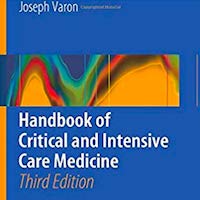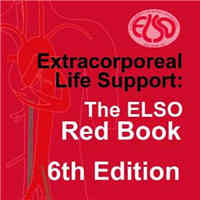Tag: treatment
Effect of Obstructive Sleep Apnea Treatment on Renal Function in Patients with Cardiovascular Disease
Obstructive sleep apnea (OSA) is associated with impaired renal function, but uncertainty exists over whether OSA treatment can influence renal outcomes. Objectives: To determine the effects of continuous positive airway... read more
When Evidence Says No, but Doctors Say Yes
Long after research contradicts common medical practices, patients continue to demand them and physicians continue to deliver. The result is an epidemic of unnecessary and unhelpful treatments.... read more
Effects of Polymyxin B Hemoperfusion on Mortality in Patients With Severe Sepsis and Septic Shock
Several studies have reported a survival benefit for polymyxin B hemoperfusion treatment in patients with severe sepsis and septic shock. However, recently, a propensity-matched analysis and a randomized controlled trial... read more
New Diagnostic Tests: More Harm Than Good
Although new diagnostics may advance the time of diagnoses in selected patients, they will increase the frequency of false alarms, overdiagnosis, and overtreatment in others. Bjorn Hofmann and H. Gilbert Welch explain how... read more
In Treating Sepsis, Questions About Timing and Mandates
The question of whether Rory's Regulations save lives isn’t asked or answered in the recent study. Sepsis deaths were already decreasing in the United States before the mandate, and determining its contribution to... read more
How to Remove the Grey Area Between VAP and VAT?
We read with great interest the study performed by Paula Ramirez and colleagues. The study included 71 patients with ventilator-associated pneumonia (VAP) and the authors coined a new term called "gradual VAP".... read more
Rescue Strategy for Treating Severe Carbapenemase-Producing Klebsiella Pneumoniae Infections
Recent reports have suggested the efficacy of a double carbapenem (DC) combination, including ertapenem, for the treatment of carbapenem-resistant Klebsiella pneumoniae (CR-Kp) infections. We aimed to evaluate the clinical... read more
Cardiovascular Testing and Clinical Outcomes in Emergency Department Patients With Chest Pain
In patients who present to the emergency department with chest pain without evidence of ischemia, is cardiac testing - noninvasive testing or coronary angiography - associated with changes in revascularization or acute myocardial... read more
Focus on Brain Injury – The Staircase Approach
Focus on brain injury, staircase approach for the treatment of intracranial hypertension after TBI. The development of clinical protocols based on both laboratory and clinical data has underpinned the achievements of neurocritical... read more
Withholding Pantoprazole for Stress Ulcer Prophylaxis in Critically Ill Patients
A decreased frequency of upper gastrointestinal bleeding and a possible association of proton pump inhibitor use with Clostridium difficile and ventilator-associated pneumonia have raised concerns recently. The Reevaluating... read more
Sepsis and Therapeutic Interventions
The global burden of sepsis is substantial. Therefore, in a retrospective before-after clinical study, Marik et al compared the outcome and clinical course of consecutive septic patients treated with intravenous vitamin C,... read more
Airway glucose homeostasis: a new target in the prevention and treatment of pulmonary infection
In health, the glucose concentration of airway surface liquid (ASL) is 0.4mM, around 12 times lower than blood glucose concentration. Airway glucose homeostasis is a set of processes that actively maintain low ASL glucose... read more
Angiotensin II may improve vasopressors’ efficacy
Adding angiotensin II to available vasopressor therapies correlated with significantly improved arterial pressure in patients with catecholamine-resistant vasodilatory shock and less adverse effects, according to a study... read more
Management of Septic Shock
The results of the PRISM trials confirm that early intervention strategies, including early detection of sepsis, risk stratification, early administration of antibiotics, and appropriate fluid resuscitation, improve the outcomes... read more
WHO tries to keep certain antibiotics largely off the table
In a bid to battle antibiotic resistance, the World Health Organization for the first time has classified antibiotics into three categories, including one that lists the drugs it hopes will not be used except in circumstances... read more
Diagnosis, Prevention, and Treatment of C. difficile: Current State of the Evidence
This is a summary of a systematic review that evaluated the recent evidence regarding the accuracy of diagnostic tests and the effectiveness of interventions for preventing and treating Clostridium difficile (C. difficile)... read more
ER Overcrowding Delays Sepsis Treatment
Prompt antibiotic initiation is associated with improved mortality in sepsis and septic shock. However, new research shows that patients with sepsis, a life-threatening complication of an infection, had delays approaching... read more
Personalised Medicine in Intensive Care
The specialty of intensive care medicine grew out of the realisation that critically ill patients needed more attention and specialised treatment than could be provided on a general ward, and that many of these patients had... read more
ICU Medicine Is a Team Sport
I am incredibly fortunate to work on a multidisciplinary team every day. The team includes respiratory therapists, nurses, nutritionists, attending physicians (APs), and advanced practice providers (APPs) (nurse practitioners... read more
WHA Adopts Resolution on Sepsis
World Health Assembly and the World Health Organization made sepsis a global health priority, by adopting a resolution to improve, prevent, diagnose, and manage sepsis. This marks a quantum leap in the global fight against... read more
What emotions are doctors allowed to feel?
As a medical professional, struggle between feeling too much and feeling too little is constant. Feelings are a double edged sword in medicine - many times they can shake you or beat you down. After two years, I know this:... read more
Exosomes in Critical Illness
Exosomes are small, cell-released vesicles (40–100 nm in size) with the potential to transfer proteins, lipids, small RNAs, messenger RNAs, or DNA between cells via interstitial fluids. Due to their role in tissue homeostasis,... read more









